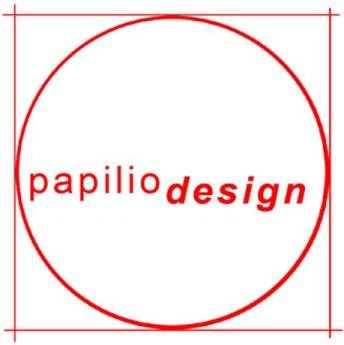
On June 17, 2006, in Dublin, Ireland, Birgitt Becker, responsible of International affairs from AIPi (Associazione Italiana Progettisti d’Interni), recited the manifesto "form and function follows sustainability" on the occasion of the boardmeeting ECIA (European Council of Interior Architects):
Form and function follows sustainability (1)
During the 19th Century, machine use and mass-production was claimed to be responsible for spoiling people’s taste (2), since the industrialization and after the post-Bauhaus epoch to the present day the creative and technical work on buildings, houses and everyday goods of consumption have contributed to a rapid reduction of already drastically limited environmental resources.
In the past, moderation in respect to creative work had a purely aesthetic significance. With his quotation “less is more“ Mies van der Rohe appealed to the idea of minimalism at the beginning of the last century. (3)
Meanwhile, his aim of moderation is more up to date than ever, this time not only for aesthetic motives but as a result of a scarcity of resources and materials. Natural laws in the third millennium have forced us to use new ideas and logic, if we want the situation to change in the future, i.e. social relevance, the harmful use of chemicals, waste disposal or recycling. This will influence architecture and designtheory in the future.
The third millennium faces new challenges for interior architects
Beneath our primary protective shield, our clothing, follows the second shield, our interiors and thus our immediate environment. Followed by the outwardly directed architectural construction. It is part of the profession of an interior architect to plan, form and realize interiors in the architectural context, in which the physical, psychological and social well-being of humans should be warranted.
However, in the meantime we have become, so it seems, helplessly exposed to an array of private and public pollutants through countless foreign substances (indoor toxins, micro organisms, radioactivity, electric and magnetic fields etc.) which are contributing to the increased discussion of “indoor-illness” and “sick-building-syn-drome”.3) These illnesses caused by invisible toxins are now being viewed as more worrying than “outdoor” toxins, since we spend up to 90 % of our time inside (apartments, schools, workplaces, public transportation…). (4)
Once outside of our living spaces we are exposed to a variety of pollutants on a daily basis that determine the everyday success or failure of our direct environment. The conglomeration and interaction of these cannot be calculated and in several cases cannot be avoided except when indoors. (5)
The last decades have brought about many innovations of the building- and furnishing industry, that were first celebrated as innovative progress and later proved to be detrimental for both humans and the ecosystem: depletion of non renewable raw materials, ongoing depletion of the earth’s protective ozone layer, costly medical treatment for people and redevelopments of buildings because of the use of asbestos-containing materials, heavy metals and pesticides, dangerous wood protections, chemicals like Pentachlorophenol (PCP) and Lindane, sealants on the basis of Polychloratebiphenyl (PCB), gas from Formaldehyde over weeks and months from interiors or treatments, for example from textiles and carpets with Pyrethroide, that harm humans more than the moths and insects they are meant to expel. In addition, all of the above are connected to hazardous waste and disposal problems in which the building sector has a significant share. (6)
It is part of the task and responsibility of an interior architect to recognize, determine, and appropriately apply technologies and products that are compatible for both the environment and human beings so as to contribute to the improvement and healthy redevelopment of the currently problematic indoor/interior situation.
Reformulation of the design concept - contribution of interior architects
In our anthropocentrically oriented society, where environmentally ethical education is not innate but acquired the most important instrument of creative and technological work is an interdisciplinary education.
As far as the occupational image of interior architects is concerned, it is universities, technical schools, chambers of crafts and trade that must step up to the didactical promotion. It is their task to develop interdisciplinary orientated study programmes for the present and the future that fulfil technical, creative, environmental, medical and socio-political requirements.
This means a great challenge for interior architects, who must now have an understanding of complex connections and have to come to terms with the consequences of their creative work. Modern interior architecture is creative, exciting, innovative, and gives answers to what is possible with modern technology and at the same time compatible with humans and the environment.
Birgitt Becker
(1) B.Becker: Form and function follows sustainability, 1996, conference “Architettura Bioecologica e Design Ambientale”, San Michele, Rome;
(2) Bade taste: criticism of John Ruskin (1819-1900), authors, social reformers and painter and William Morris (1834-1896), politicians, later also designer and craftsmen;
(3) Less is more: Quotation of Architect Mies van der Rohe (1886-1917), he appealed to the idea of Minimalism;
(4) 50 % of all chronic illnesses, also cancer, is to be led back on the sick environment; lecture 2006 “environmental medicine – Baubiologie – a necessary symbiosis” Prof. Dr. Volker Zahn, environmental doctors; s..a. Institut für Baubiologie + Ökologie – IBN, Prof. Anton Schneider, Neubeuern;
(5 ) new illnesses are determined: Multiple Chemical Sensitivity (MCS), Sick building syndrom, Fybromyalgie, Chronic Fatigue Syndrom): lecture October 2004 Centre de la Ville et de l’Architecture, Brüssel, Ralph Baden, Ministry of health, Luxembourg;
(6) Ambiente-Uomo-Casa: Birgitt Becker, Monteleone Editore, Vibo Valentia, 1996 and Bauen-Wohnen-Leben, Verlag ecokreis, 2002, ISBN 3-9807772-0-0.